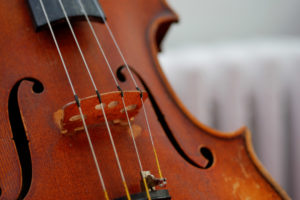Nagesh Adluru is an associate scientist affiliated with the Center focusing on how to make sense of the brain imaging data generated by neuroscience studies. When our researchers use imaging technology to gather pictures of the brain, Adluru develops analysis techniques to draw conclusions from millions of those pixels.

How has your upbringing shaped how you do your research?
As a child, I learned basic techniques of mathematics from my mom and dad, who were educated in the sciences.
Where I grew up in Hyderabad, India, there were curfews shutting off schools for weeks and months at a time, and during those times, I soaked up as much calculus as I could from my dad who was trained in physics.
When I do analyses on studies at the Center, I apply the best and most rigorous methods and spend a lot of time making sure we have a very basic understanding of what we’re doing and go beyond typically used rules of thumb. I really like to open and look under the hood and understand what’s happening with the data. Pursuing such sensitivity and specificity is necessary and extremely important for me to be able to call my work “science.”
"I really like to open and look under the hood and understand what’s happening with the data. Pursuing such sensitivity and specificity is necessary and extremely important for me to be able to call my work 'science.' ”
Are we closer to understanding how the brain works?
It’s hard to make definitive statements about the brain without being comprehensive — i.e., combining lots of different measurements. Only then, can we really establish the relationships between the brain and high-level behavior. I use techniques from machine learning, statistics and MRI signal processing.
I also focus on analyzing diffusion weighted MRI and T1-weighted MRI, which are techniques that offer excellent white and gray matter “fingerprints” in the brain respectively. Modern artificial intelligence is another area that can help make sense of the information we collect.
What are you and your collaborators on the cusp
of discovering?
I’ve done research on a variety of conditions like autism and anxiety, but lately I’ve been collaborating more directly with research groups focused on Alzheimer’s disease. We’re using math and differential geometry to develop and test new prognosis and detection tools. Early detection of the disease is ideal for effective interventions, but this is where simply scanning the brain falls short. Using tools from mathematics gives you specialized microscopes that can find fainter yet persistent correlations, and hopefully detect the disease at an earlier stage.
–Marianne Spoon






